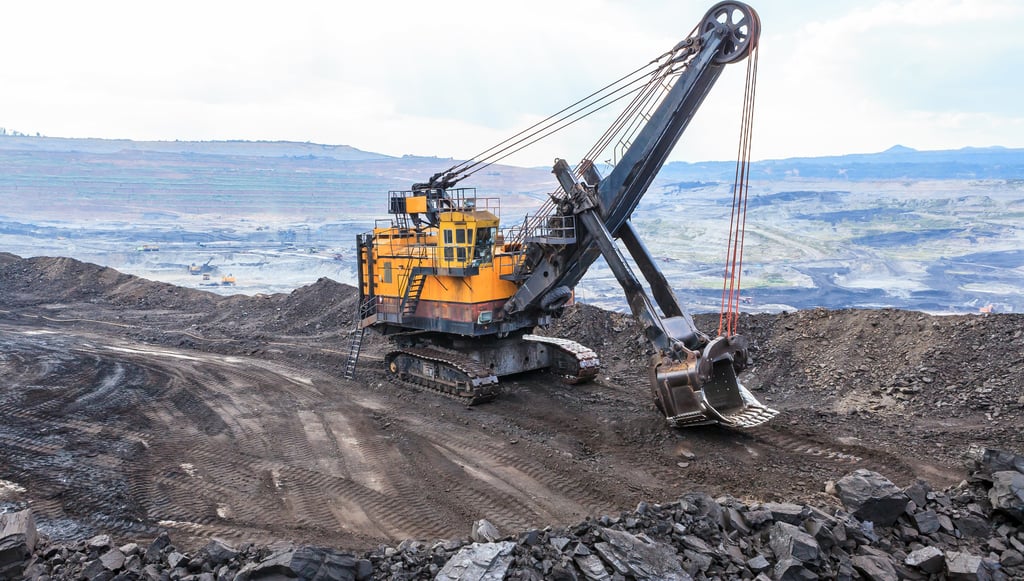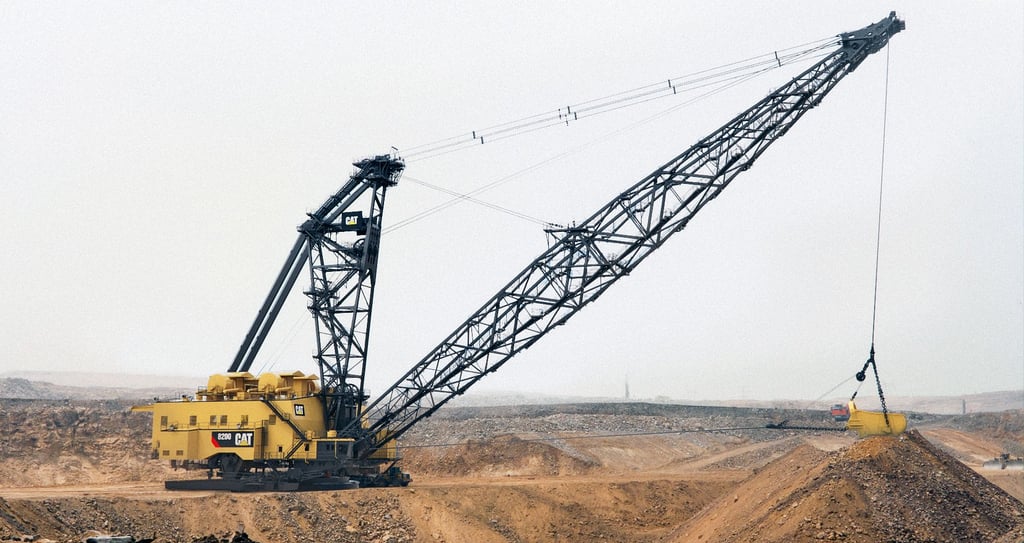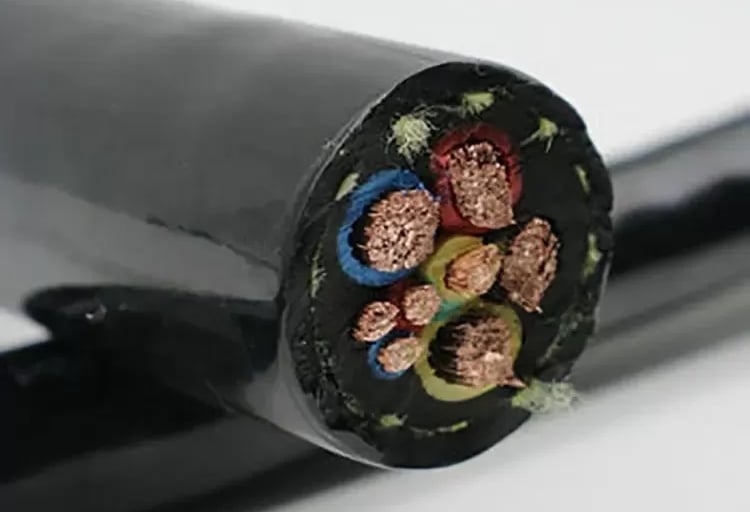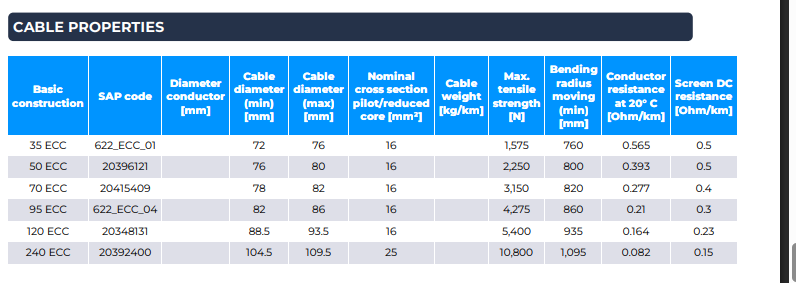Anhui Feichun Special Cable Co.,Ltd Li.wang@feichuncables.com
Understanding 622 Type ECC Mining Traction Cables: Safety and Reliability in South African Mining
Discover how 622 Type ECC mining traction cables enhance safety and reliability in South African mines. Learn about SANS 1520-2 compliance, technical specifications, and applications in underground and surface mining operations.
Li.wang@Feichun Cable
7/29/202510 min read


Introduction
South Africa's mining industry stands as one of the world's most demanding environments for electrical equipment. From the depths of gold mines in the Witwatersrand to the vast platinum operations in the Bushveld Complex, mining operations require electrical cables that can withstand extreme conditions whilst maintaining absolute safety standards. The recent focus on mining safety following incidents at various operations across the country has highlighted the critical importance of reliable electrical infrastructure.
Mining traction cables serve as the lifeline for mobile machinery in both underground and surface mining operations. These specialised cables power everything from massive excavators and draglines in open-pit mines to conveyor systems and drilling equipment in underground workings. The harsh realities of South African mining environments – including extreme temperatures, corrosive chemicals, constant mechanical stress, and the ever-present risk of rock falls – demand cables that go beyond standard industrial specifications.
Enter the 622 Type ECC mining traction cable, a sophisticated solution specifically engineered for the most demanding trailing applications in mining operations. These cables represent a significant advancement in mining electrical safety, combining robust construction with compliance to South African National Standards (SANS), making them ideally suited for the unique challenges faced by South African mines.
The importance of selecting appropriate mining cables cannot be overstated. With South Africa's mining sector contributing significantly to the country's GDP and employing hundreds of thousands of workers, the reliability and safety of electrical systems directly impact both productivity and human lives. The 622 Type ECC cable addresses these concerns through its specialised design, offering enhanced protection against the mechanical and environmental stresses that characterise modern mining operations.
Cable Model Overview: 622 Type ECC
What is the 622 Type ECC Cable?
The 622 Type ECC (Earth Continuity Conductor) mining traction cable represents a pinnacle of engineering designed specifically for large material handling machines in mining applications. The designation "622" refers to the cable's construction standard, whilst "ECC" indicates the presence of an earth continuity conductor – a critical safety feature that ensures continuous earthing even if the main earthing system fails.
This cable type has been specifically developed for connection of large material handling machines such as excavators, shovels, and draglines in open-cast mines, particularly in trailing applications where cables must withstand constant movement and mechanical stress. The reinforced outer sheath makes it exceptionally suitable for high-demanding trailing operations, providing extreme robustness and toughness against abrasion and tearing.
Compliance with Standards
The 622 Type ECC cable's compliance with SANS 1520-2 certification represents more than just meeting minimum requirements – it demonstrates a commitment to the highest safety standards in South African mining. SANS 1520-2 specifically addresses mining cables, ensuring they can withstand the unique environmental and operational challenges present in South African mining operations.
The cable also meets numerous other critical standards including SANS 1411-1 for conductors and SANS 1411-3 for compounds. Fire performance compliance with DIN EN 60332-1-2 and IEC 60332-1-2 ensures the cable will not propagate flames in the event of a fire – a crucial safety consideration in confined mining spaces. Chemical behaviour compliance with IEC 60811-404 guarantees resistance to the various chemicals encountered in mining operations, whilst DIN VDE 0298-3 and DIN VDE 0298-4 compliance ensures proper application parameters and electrical performance.
Meeting South African electrical safety regulations enforced by the National Regulator for Compulsory Specifications (NRCS) is not merely about compliance – it's about ensuring every cable installed contributes to a safer working environment for miners.
Construction Highlights
The 622 Type ECC cable features a sophisticated multi-layer construction designed to address every challenge faced in mining trailing applications. The conductor consists of finely stranded, tinned copper meeting Class 5 flexibility requirements, ensuring excellent electrical conductivity whilst maintaining flexibility for trailing applications.
The insulation system incorporates both inner and outer semi-conducting layers surrounding the core EPR (Ethylene Propylene Rubber) insulation material. This special compound, designated as greater than RD3, provides exceptional electrical insulation properties whilst maintaining flexibility in extreme temperatures. The outer semi-conducting layer utilises semi-conductive NBR (Nitrile Butadiene Rubber) with easy-strip properties, facilitating installation and maintenance.
The screen construction features a sophisticated braiding system using tinned copper mixed with nylon, providing both electrical screening and mechanical protection. The three power core design includes two pilots and one ECC positioned in the interstices, with clear colour identification: red, yellow, and blue power cores, and pilots in white with black numbers.
Perhaps most importantly for mining applications, the cable incorporates a tear-resistant reinforcing mesh tape over the assembly and between the sheath, preventing sheath movement under the constant mechanical stress of trailing operations. The outer sheath utilises a special polychloroprene (PCP) compound designated as greater than RS6, providing exceptional resistance to abrasion, chemicals, and environmental factors.
Technical Specifications and Parameters
Voltage Rating and Electrical Parameters
The 622 Type ECC cable operates at a rated voltage of U0/U 12.7/22(24)kV with a test voltage of 29kV, making it suitable for high-voltage mining applications. The nominal voltage of 22,000V places this cable in the medium voltage category, appropriate for powering large mining machinery and equipment.
Current carrying capacity varies according to conductor cross-sectional area, with options ranging from 35mm² to 240mm². The finely stranded, tinned copper conductors ensure excellent electrical conductivity whilst maintaining the flexibility essential for trailing applications. Conductor resistance at 20°C ranges from 0.565 Ohm/km for 35mm² conductors to 0.082 Ohm/km for 240mm² conductors, ensuring efficient power transmission with minimal losses.
The screen DC resistance, representing the combined resistance of the screen and ECC, ranges from 0.5 Ohm/km for smaller conductors to 0.15 Ohm/km for larger ones, ensuring effective earthing protection throughout the cable's service life.
Mechanical Properties
The mechanical properties of 622 Type ECC cables have been specifically engineered for the demanding trailing applications common in South African mining operations. The permanent tensile strength follows the rule of 15 N/mm², providing substantial mechanical integrity under load.
Bending radius requirements, critical for trailing applications, follow VDE 0298-3 standards: 6 times the cable diameter for fixed installations and 10 times for flexible operations. This flexibility ensures the cable can navigate the tight spaces and constant movement required in mining operations without compromising its integrity.
Maximum tensile strength varies from 760N for 35mm² conductors to 1,095N for 240mm² conductors, providing substantial resistance to the pulling forces encountered in mining applications. The bending radius for moving applications ranges from 760mm to 1,095mm depending on conductor size, ensuring the cable maintains its integrity even under constant flexing.
Cable weight considerations are crucial for practical applications, ranging from 1,575 kg/km for 35mm² cables to 10,800 kg/km for 240mm² cables. This weight distribution must be considered in cable support systems and handling equipment design.
Thermal and Chemical Resistance
Operating temperature parameters are critical for South African mining applications, where extreme conditions are common. The maximum conductor temperature of 90°C ensures reliable operation under normal conditions, whilst the short circuit temperature rating of 250°C provides safety margin during fault conditions.
Ambient temperature ranges accommodate both fixed and flexible installations. Fixed installations can operate from -40°C to 80°C, covering the extreme temperature variations possible in South African mining environments. Flexible installations operate within a narrower range of -20°C to 60°C, reflecting the additional thermal considerations when cables are in constant movement.
Chemical resistance properties include flame retardancy in accordance with EN/IEC 60332-1-2, oil resistance for applications where hydraulic fluids and lubricants are present, ozone resistance for long-term environmental exposure, and UV resistance for outdoor and surface mining applications.
Application Scenarios in South African Mining
Typical Usage in Mining Operations
The 622 Type ECC cables find extensive application across South Africa's diverse mining landscape. In open-pit operations such as those found in the Northern Cape's iron ore mines or Limpopo's platinum operations, these cables power massive excavators, draglines, and conveyor systems that operate continuously in challenging outdoor environments.
Underground applications are equally demanding, with cables powering mobile equipment including load-haul-dump (LHD) vehicles, rock drilling equipment, and conveyor systems in gold mines of the Witwatersrand or chrome mines of the Bushveld Complex. The trailing nature of these applications means cables must withstand constant movement, abrasion against rock surfaces, and potential impact from falling debris.
Recent developments in South African mining, including the increased focus on mechanisation and automation, have placed additional demands on electrical infrastructure. Modern mining operations require cables that can support not only power transmission but also the data communication systems essential for remote operation and monitoring of equipment.
Environmental Challenges in South African Mining
South African mining operations present unique environmental challenges that make specialised cables like the 622 Type ECC essential. Underground operations must contend with high humidity, corrosive groundwater, and temperature variations that can stress conventional cables beyond their design limits.
Surface mining operations face different but equally challenging conditions. The intense UV radiation of the South African sun, combined with extreme temperature fluctuations and exposure to dust and abrasive materials, demands cables specifically designed for these conditions. The recent focus on environmental compliance in mining operations has also increased the importance of cables that resist chemical degradation from various mining chemicals and processing agents.
The ongoing challenges facing South African mining infrastructure, highlighted by recent power supply issues and aging equipment, have made reliable electrical systems more critical than ever. Mine operators are increasingly recognising that investing in high-quality cables like the 622 Type ECC represents both a safety imperative and an economic necessity.
Advantages of 622 Type ECC Cables in South African Mines
The implementation of 622 Type ECC cables in South African mining operations provides numerous advantages that directly address local challenges. Enhanced safety through the earth continuity conductor system provides redundant earthing protection, critical in environments where worker safety cannot be compromised.
The long service life of these cables reduces downtime and maintenance costs, particularly important in remote mining locations where replacement can be challenging and expensive. The robust construction withstands the mechanical stresses common in South African mining operations, from the constant movement of trailing applications to the impact and abrasion encountered in underground workings.
Economic benefits extend beyond initial installation costs. The reliability of 622 Type ECC cables reduces unplanned maintenance, decreases equipment downtime, and contributes to overall operational efficiency – factors that are particularly valuable in South Africa's competitive mining environment.
Frequently Asked Questions (FAQs)
Q1: What makes 622 Type ECC cables suitable for South African mines?
The 622 Type ECC cables are specifically designed for the harsh conditions prevalent in South African mining operations. Their construction incorporates multiple protective layers, including a tear-resistant reinforcing mesh and special compound outer sheath that provides exceptional resistance to abrasion, chemicals, and environmental factors. The earth continuity conductor provides an additional level of safety crucial in underground operations, whilst compliance with SANS 1520-2 ensures they meet the specific requirements of South African mining standards.
Q2: How does SANS 1520-2 certification benefit mine operators?
SANS 1520-2 certification provides mine operators with assurance that cables meet the specific requirements for mining applications in South African conditions. This certification covers aspects including mechanical strength, chemical resistance, and safety features specifically relevant to mining operations. For operators, this means reduced risk of cable failures, compliance with regulatory requirements, and eligibility for insurance coverage that may require certified equipment.
Q3: Can these cables be used in both underground and open-pit mining?
Yes, 622 Type ECC cables are designed for versatility across different mining environments. The robust construction and wide operating temperature range (-40°C to 80°C for fixed installations) make them suitable for both underground and surface applications. The UV resistance and chemical resistance properties ensure performance in open-pit applications, whilst the mechanical protection and earth continuity features provide the safety required for underground operations.
Q4: What maintenance is required to ensure cable longevity?
Regular inspection of cable routing and support systems is essential, particularly checking for signs of mechanical damage, excessive bending, or contact with sharp surfaces. Periodic testing of the earth continuity conductor ensures ongoing safety protection. In trailing applications, regular inspection of cable drums and handling equipment prevents unnecessary stress. Proper storage of spare cables, away from UV exposure and chemical contamination, maintains their condition before installation.
Q5: How do 622 Type ECC cables improve mining safety?
The earth continuity conductor provides redundant earthing protection, ensuring personnel safety even if the main earthing system fails. The flame-retardant properties prevent fire propagation in confined spaces, whilst the robust construction reduces the risk of cable failures that could create hazardous conditions. Compliance with comprehensive safety standards ensures the cables contribute to overall mine safety management systems.
Q6: Are there local suppliers and support for these cables in South Africa?
Yes, 622 Type ECC cables are available through established electrical suppliers serving the South African mining industry. Local suppliers provide technical support, installation guidance, and maintenance services. The standardisation under SANS ensures compatibility with local electrical systems and availability of appropriate testing and certification services within South Africa.
The 622 Type ECC mining traction cable represents a sophisticated solution to the demanding requirements of South African mining operations. Through its compliance with SANS 1520-2 and other critical standards, robust multi-layer construction, and comprehensive range of technical specifications, this cable addresses the unique challenges faced by mining operations across the country.
From the gold mines of the Witwatersrand to the platinum operations of the Bushveld Complex, the reliability and safety provided by 622 Type ECC cables contribute directly to operational efficiency and worker safety. The earth continuity conductor system, combined with exceptional mechanical and chemical resistance, ensures these cables can withstand the harsh realities of South African mining whilst providing the electrical performance required for modern mining operations.
As South Africa's mining industry continues to evolve, embracing new technologies and facing increasing safety and environmental requirements, the importance of reliable electrical infrastructure cannot be overstated. The 622 Type ECC cable represents an investment in both operational efficiency and safety that mining operators cannot afford to overlook.
The technical specifications, from voltage ratings suitable for high-power applications to mechanical properties designed for constant trailing operations, demonstrate the careful engineering that has gone into creating a cable specifically suited to mining applications. With proper installation, maintenance, and support, these cables provide a foundation for safe, efficient mining operations that contribute to South Africa's continued position as a global mining leader.
For mining operators seeking to enhance safety, reduce downtime, and ensure compliance with South African standards, the 622 Type ECC mining traction cable offers a proven solution backed by comprehensive technical specifications and real-world performance in some of the world's most challenging mining environments.







Email Address: Li.wang@feichuncables.com
© 2025. All rights reserved.


One-click to Quickly Contact
Products
Offshore & Marine Cable
XLPE Cable
Contact
Company
Location:
Building A Private Science and Technology Park, Hefei Economic and Technological Development Zone, Anhui Province, China
